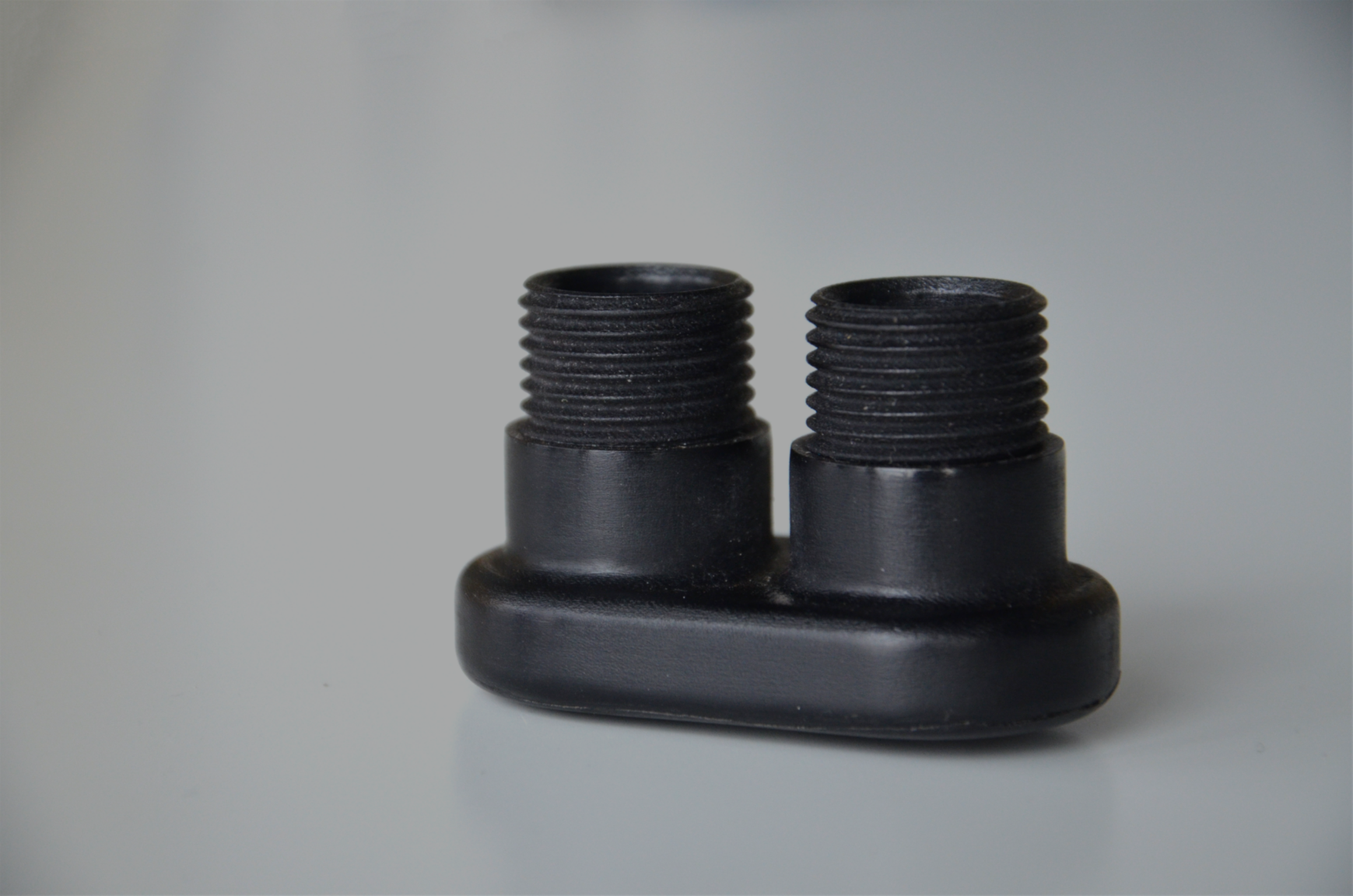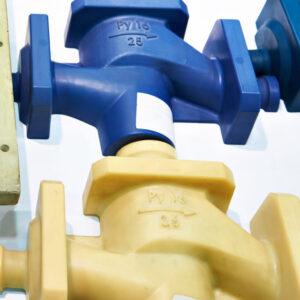

Originally published on fastradius.com on April 13, 2020
Urethane casting is a versatile manufacturing process that consistently yields flexible or rigid plastic parts at production-level quality, but without the expenses associated with injection molding. For this reason, urethane casting tends to have two primary uses: prototyping and low-volume production runs that do not justify the costs of time-consuming hard tooling.
The cast urethane process begins with a master pattern, which can be made using 3D printing, CNC machining, or may be customer-supplied. The pattern is placed in a mold box, which is filled with liquid silicone and allowed to cure overnight. The silicone block is then surgically cut into two pieces, freeing the master pattern and creating the mold that will be used to make additional copies of the part. The two pieces of silicone are reassembled, the cavity is filled with urethane casting resin, and the mold is placed in a heated vacuum chamber to cure. The end result is a 1:1 scale replica of the master pattern that requires little — if any — post-production finishing.


Because urethane casting creates incredibly precise replicas of the master pattern, the process serves a range of applications, including parts with joints or features that overlap, or pieces with raised or inset letters or designs. The process also enables the addition of ribs, which can increase the strength and rigidity of casted parts (which already tend to be as strong or stronger than injection molded or 3D printed parts).
What’s more, urethane casting can be completed with a variety of materials — running the gamut from soft and flexible to rigid and impact-resistant. Materials can also be blended to create a unique color.
Additionally, the turnaround time is faster for urethane casting than it is for injection molding. The molds for cast urethane parts can be tooled and ready for use in two weeks (sometimes even faster), whereas the production of injection molds is more labor-intensive and can therefore take several months before entering the production stage.
Cast urethane is often used as a bridge between SLA prototyping and mass production. Cost-effective and versatile, the process can be used to manufacture parts in a variety of sizes, durometers, materials, and colors, while still providing production-level material performance.
The ability to rapidly generate multiple prototypes means that changes can be incorporated and retested quickly, making urethane casting an ideal method for consumer testing or end-user evaluation of parts.
Also called rapid tooling, bridge tooling is the process between product development and production. Since the process of retooling molds is expensive and sometimes impossible, it’s important to make sure a tool works correctly before moving into volume production. The flexibility of cast urethane allows the simple evolution of prototypes in response to user testing, while also ensuring that each part remains accurate in accordance with the master pattern — even down to detailed internal features.
Urethane casting is a consistent, flexible, and precise manufacturing process — factors that are ideal for low-volume runs of production-grade parts. With the development of cast urethane soft tooling, low-volume production has become increasingly cost-effective and efficient for a wide range of consumer products and medical devices.
Because urethane casting supports a high degree of complexity and intricacy in the initial build. This allows for the speedy production of parts with small details, involved geometries, and varying wall thicknesses — eliminating the need for additional passes or manufacturing phases that can become expensive when executed across an entire production run.
Ultimately, urethane casting is an effective way to manufacture low- to mid-volume production runs for detailed prototypes and plastic parts. It’s a flexible and scalable process that works with a wide range of materials, and costs far less that the aluminum or steel tooling required for injection molding. At the same time, cast urethane parts offer comparable strength to injection molded parts, as well as production-quality wear and performance properties.
At SyBridge, we take pride in providing excellent service and delivering superior parts — enabling our customers to push the boundaries of what’s possible. If you’d like to learn more about the differences between urethane casting and injection molding, or if you’re ready to get started on a project, contact us today.
Forget typical cycle times. We're pushing the boundaries of conformal cooling. While traditional approaches deliver…
Forget typical cycle times. We're pushing the boundaries of conformal cooling. While traditional approaches deliver…
From left to right: Brayden Janak (apprentice); Logan Vifaquain (CNC machining, Programming and CMM); Ron…
SyBridge Technologies is proud to announce we have been awarded the 2023 General Motors Supplier…
Today, designers and engineers are accustomed to working with digital tools in their day-to-day jobs.…
Optimizing Your Injection Molding Process for Cost-Effective Manufacturing Excellence In today’s competitive landscape, manufacturers are…